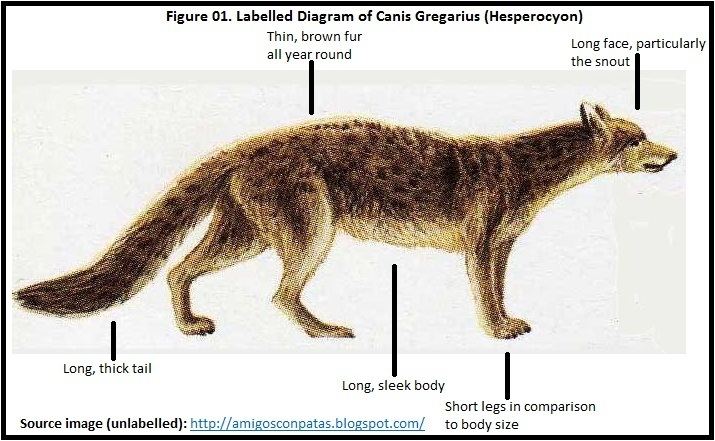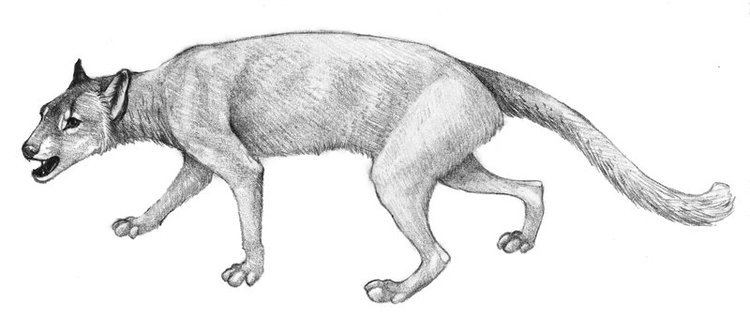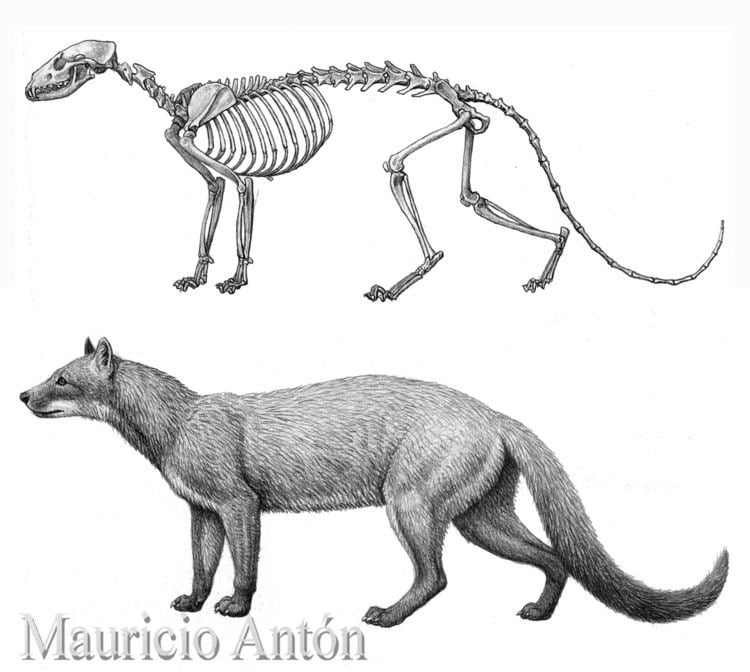Subfamily †Hesperocyoninae Higher classification Hesperocyoninae | Scientific name Hesperocyon | |
 | ||
Similar Canidae, Hesperocyoninae, Mammal, Cynodesmus, Borophaginae | ||
Hesperocyon is an extinct genus of canids (subfamily Hesperocyoninae,family Canidae) that was endemic to North America, ranging from southern Canada to Colorado. It appeared during the Uintan age-Bridgerian age (NALMA) of the Mid-Eocene 42.5 mya—31.0 Ma. (AEO). Hesperocyon existed for approximately 11.5 million years.
Contents

Taxonomy

Hesperocyon was assigned to Borophagini by Wang et al. in 1999 and was the earliest of the canids to evolve after the Caniformia-Feliformia split some 42 million year ago. Fossil evidence dates Hesperocyon gregarius to be at least 37 million years old, but the oldest Hesperocyon has been dated at 39.74 mya from the Duchesnean North American land mammal age.

The Canidae subfamily Hesperocyoninae probably arose out of Hesperocyon to become the first of the three great dogs groups: Hesperocyoninae (~40-30 Ma), Borophaginae (~36-2 Ma), and the Caninae lineage that led to present-day Canidae, inclusive of modern-day wolves, foxes, coyotes, jackals and dogs (Canis lupus familiaris). At least 28 known species of Hesperocyoninae evolved out of Hesperocyon, including those in the following five genera: Ectopocynus (32-19 mya), Osbornodon (32-18 mya), Paraenhydrocyon (20-25 mya), Mesocyon (31-15 mya) and Enhydrocyon (31-15 mya).
Morphology

This early, 80 cm (2 ft 8 in) long canine looked more like a civet or a small raccoon than a canine. Its body and tail were long and flexible, while its limbs were weak and short. Still, the build of its ossicles and distribution of its teeth showed it was a canid. Although it was definitely a carnivore, it may also have been an omnivore - unlike the hypercarnivorous Borophaginae that later split from this canid lineage.
Body mass
Two specimens were examined by Legendre and Roth for body mass. One specimen was estimated to weigh 1.67 kg (3.7 lb). A second was estimated to weigh 1.73 kg (3.8 lb).
Fossil record
The oldest fossil evidence was recovered from Saskatchewan dating from 42.5 mya—31.0 Ma. The youngest fossil was recovered from the Dog Jaw Butte site, Goshen County, Wyoming dating to the Arikareean age (NALMA) of the Oligocene and Miocene 42.5 mya—31.0 Ma. (AEO).
